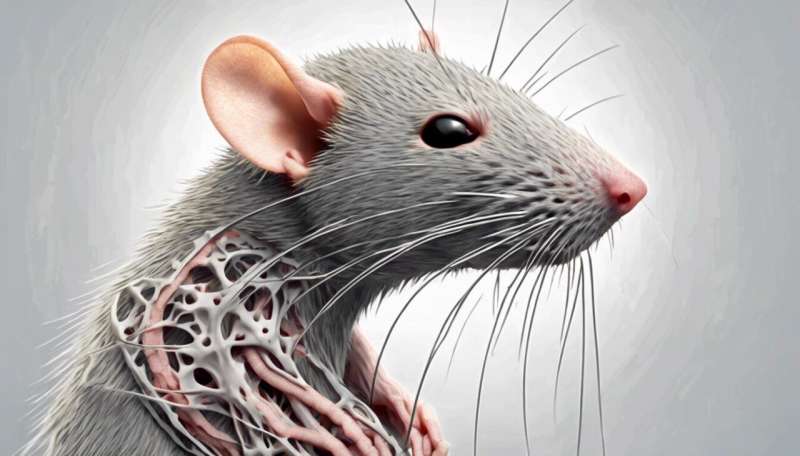AI-Created Rat Genitalia of Varying Sizes Published in Scientific Journal

February 19, 2024 report
This article has been evaluated according to the editorial procedure and guidelines set by Science X. Various key attributes have been upheld by the editors to ensure the authenticity of the content:
- fact-checked
- trusted source
- proofread
by Bob Yirka, Phys.org
Editors at the journal Frontiers in Cell and Developmental Biology retracted a manuscript after it came to light from readers' observations that support images were improperly created by an AI image generator. The reason for the retraction, as explained by the editors, was 'anomalies raised regarding the nature of its AI-generated figures.'
The article, centered around stem cell research in tiny mammals, incorporated AI-created images demonstrating rat anatomy. An abnormality in one image showed a single rat with unusually large genital organs compared to the rest of its body. Some associated text could not be comprehended. Another image illustrated a rat cell that did resemble a real rat cell's structure.
The distorted images are predicted to intensify ongoing debates within the scientific fraternity concerning the employment of AI in manufacturing visuals or textual content for scientific papers, especially those published in recognized journals.
In this scenario, the appearance of such misleading images in a peer-reviewed journal remains obscure. The authors, a collaborative team from Hong Hui Hospital and Jiaotong University in China, candidly admitted to utilizing AI to generate the images, even attributing credit to Midjourney.
Media reports have indicated that Frontiers permits the application of AI-produced materials, provided their usage is revealed, as was the case here. However, as per policy, every effort should be made to fact-check the material created by these systems, which wasn't evident in this situation.
Frontiers' editors initially notified that the article had been rectified, and a newer version would be published imminently. However, the paper was retracted shortly after.
The errors committed by the paper's authors and the journal's team that approved its publication likely herald many more such mishaps in the future, although it's uncertain what modifications will be required to avert them.
© 2024 Science X Network




